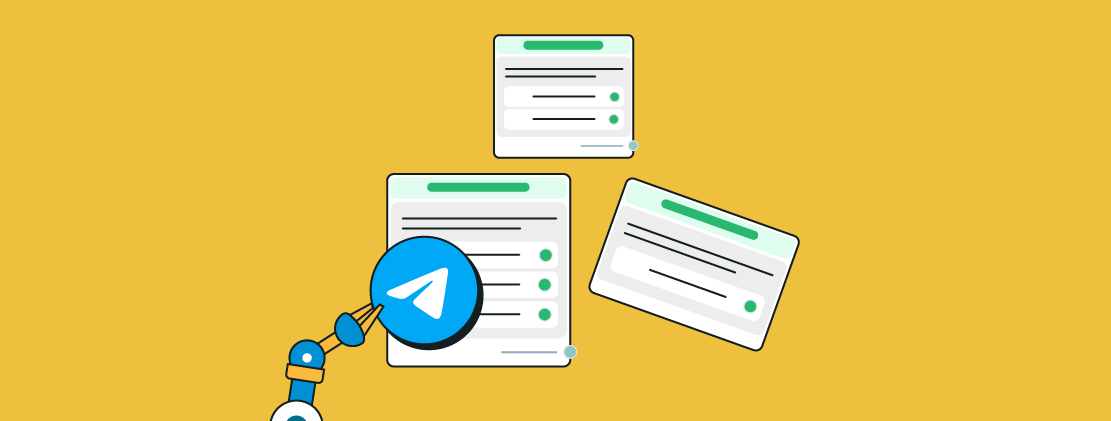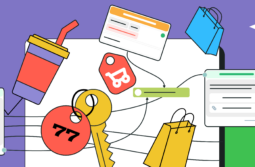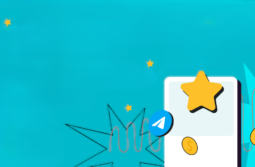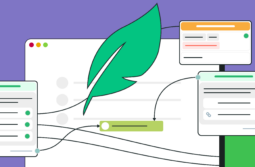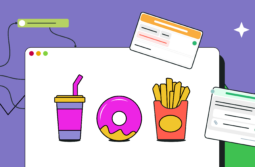You can’t surprise anyone with a Telegram chatbot in 2022: online course developers create them to keep in touch with students, marketers develop them to automate customer support and sales, etc.
For the most part, these chatbots are created using simple visual builders. A person creates an account, builds a flow using ready-made elements, adds messages, saves their campaign, and can immediately test it or share a chatbot invite link with their audience.
The SendPulse team started developing their Telegram chatbot builder two years ago. During this time, our platform has helped create over 100,000 active bots, which is how we gained expertise that we want to share in this piece.
We’ll tell you about:
- why we didn’t want to risk developing a Telegram chatbot builder at first;
- how long the development process took and how we managed it;
- what activities helped create our product;
- how feedback affected the product development process;
- niches and industries that are actively using Telegram chatbots.
Content:
Who are Telegram chatbots for?
A Forbes study confirms that easy access to the internet in the mid-2000s led to rapid customer base growth and the emergence of new communication channels. This, in turn, led to the development of marketing automation technologies, thanks to which brands could reach out to their audiences without involving additional human resources.
The SendPulse marketing automation platform was launched in 2015, and we released the first version of our Facebook Messenger chatbot builder in 2019.
Therefore, despite the communication channel’s potential, we decided to develop a Facebook chatbot builder first. Users appreciated its effectiveness, so they constantly asked when there would be a possibility to create chatbots for other messaging apps, and a significant number of their requests were Telegram-related.
Chatbots took the online education industry by storm from the very beginning. Online stores and SaaS projects have a knack for them as well since chatbots allow them to automate their customer support and increase clients’ loyalty and sales quite effectively.
A well-configured chatbot cannot replace your employees, but it does reduce their workload significantly by:
- answering common questions;
- informing subscribers about promotions, sales, and product characteristics;
- collecting leads using lead magnets;
- allowing users to pay for a product, book a service, or register for an event;
- learning about subscribers’ needs and preferences to offer a product that’s best for them;
- collecting reviews.
Our team faced a challenging task: developing a feature-loaded but intuitive chatbot builder that would cover all the needs of small and medium-sized businesses.
How we developed our Telegram chatbot builder
We will level with you: we did not develop our chatbot builder from scratch, so it all happened pretty fast. We have put together all the groundwork materials on the builder visuals we had and started building on them until we created an interface that people currently call one of the most user-friendly on the market.
Our visual chatbot builder is a no-code solution that requires no programming skills and allows you to develop a bot in a few hours. The builder itself consists of three main parts: the left sidebar with all the elements you’ll need to build a bot, the workspace where you create your chatbot architecture, and the right panel where you can edit elements.
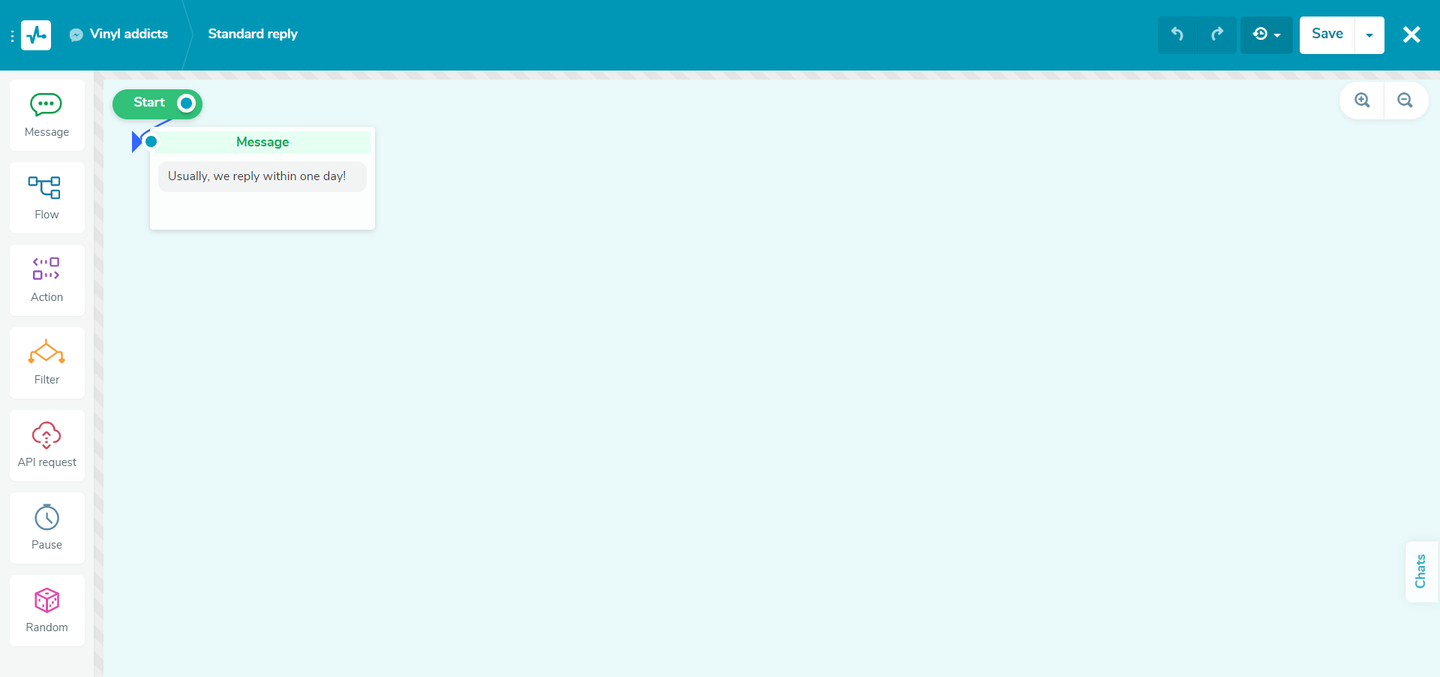
There are seven elements you can add when creating a bot using our Telegram chatbot builder:
- Message. This element allows you to create messages and add files, images, buttons, and links.
- Flow. This element helps you link another flow to your message to break your chatbot script into several branches and not overload it with overly long and complicated flows.
- Action. This element allows you to add a tag, ask an admin to join the conversation, assign a variable to personalize messages or segment your subscribers, create a deal, or send data to an external service.
- Filter. This element allows you to work with conditions and actions. For example, if a user has subscribed, they will be granted access. If not, your bot will tell them what to do next.
- API request. This element will help you get data from external sources. For example, you can inform a user about their order status or show them your best-selling products.
- Random. This element helps you set up a random scenario, for example, to conduct quizzes or diversify certain flows a subscriber goes through more than once. It can also be used for A/B testing, for example, when you are not sure what discount to offer, which text version is better, or how often and when to remind users about bonuses. Analyze which option your subscribers responded to the most, and go for it.
We also tried to use our pre-written code as much as possible. Our Facebook chatbot builder script was our primary groundwork. Still, the differences between these apps, API, and Telegram bots’ broader functionality often were our stumbling blocks.
What helped us speed up the process was our team members’ close and constant communication. It may seem that frequent discussions get in the way of progress, but, in our case, it was exactly the opposite. We were able to quickly deal with any problem and develop the most convenient and intuitive product for our end users.
Our testers and backend and frontend developers were focused on the development process itself. Other experts — designers and UX writers — were recruited from other projects within the company. Over time, the team has grown, but the principle of simultaneous development of several company products remains the same, making it possible to grow without “inflating” the staff.
The app’s features imposed many restrictions that required unique architectural solutions. For example, Telegram does not allow you to process more than 30 requests per second from one bot, which makes it practically impossible to send bulk messages to an extensive subscriber list via your chatbot. Telegram channels are better suited for this. We’ve separated chat messages, flows, and campaigns into separate branches so that they don’t block each other. This architectural solution allows users to send bulk Telegram messages and use our builder more easily.
We also lowered the sending priority for bulk chatbot campaigns and raised it for chat messages and auto-replies. This increases the builder’s efficiency from our end users’ point of view because they receive answers to their questions as fast as possible.
How we released and promoted our Telegram chatbot builder
Once our team started developing the builder, the marketing department released a landing page to announce it and added the “Notify me” button. This way, we could gather a base of beta testers and assess the public’s interest in Telegram chatbots.
We received several dozen applications on the very first day. This confirmed that there was a demand for new communication channels on the market and proved that our decision to develop this new product was timely.
The big release happened in April 2020.
Immediately after the release, we were snowed under with feedback. People shared their user experience, asked questions, and created room for our future functionality improvement. We considered every request and created a product that met the audience’s demand.
We received our first payments on the day of the release. Those who wanted to be the first to master the new communication channel purchased a pricing plan to avoid the thousand subscribers limit. This is how it works to this day: with our paid pricing plans, you can send an unlimited number of messages to your subscribers.
Users also paid to be able to request data from external servers, use the maximum number of tags and variables, and remove SendPulse’s logo.
Later, we introduced the possibility of accepting payments with our paid pricing plans, which means that you can create your online store right in Telegram! You can develop a product catalog and search filters, accept payments, and offer to repeat a user’s purchase.
The majority of our chatbot builder users are infopreneurs, but they also use another product of ours, the online course builder. We plan to integrate our online course builder with the Telegram chatbot builder so that our clients have all the tools they need on one platform.
In 2020, several dozens of bots were created every day, and our growth was pretty smooth. Prolonged COVID-19 lockdowns became the first significant booster that motivated people to create Telegram bots.
In 2022, a surge of interest in this communication channel on the part of Ukrainians was provoked by the full-scale military invasion of Russia since more and more people had to communicate online. A slight drop in the total number of bots happened due to the outflow of Russian users for whom we disabled the possibility to register and stopped providing customer support.
Currently, SendPulse is creating about 200 new chatbots every day.

Telegram has become an invaluable tool during the war: volunteers, charitable foundations, and those who care created chatbots to teach their fellow citizens how to survive and adapt, spread important news quickly, and help civilians and the military.
The public’s interest inspired us to start one of our social initiatives from the first days of the war. We provided free access to our chatbot builder upon request so that as many people and organizations as possible could create bots to share information crucial for our country’s survival.
In August 2022, we reached the number of 100,000 active Telegram chatbots that constantly send messages and expand their subscriber bases. You can see the growth of our Telegram chatbot builder over the last year in the chart below.
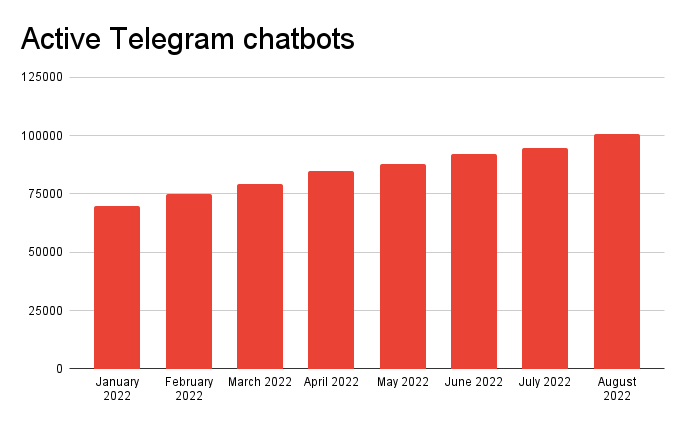
Our users send over a million messages every day — and the load is only increasing. Most of the messages inform or notify people about something, like a company’s location or working hours. Still, some customers managed to use our Telegram chatbot builder possibilities to their fullest, as it can do so much more.
For example, you can use data stored on your site or in your CRM system to provide a subscriber with an update on their order status or link to a user’s account on your site to personalize your offers and remind them about your loyalty program possibilities. We provide detailed documentation on how to integrate with SendPulse.
Summing up
As the market moves towards expanding automation possibilities even further, chatbots will continue to grow and evolve, enabling brands to communicate with their audiences with minimal human involvement.
Currently, chatbots can:
- send auto-replies based on a pre-written script or keywords;
- send automated emails;
- accept payments via four payment systems;
- segment your audience and personalize messages;
- exchange data with third-party programs using the GET and POST requests;
- work in groups and channels.
Telegram bots are becoming an integral part of business processes thanks to instant and accurate answers, increased sales, and the ability to form a loyal audience. This is a win-win situation, as chatbots can bring benefits to businesses and end users.
